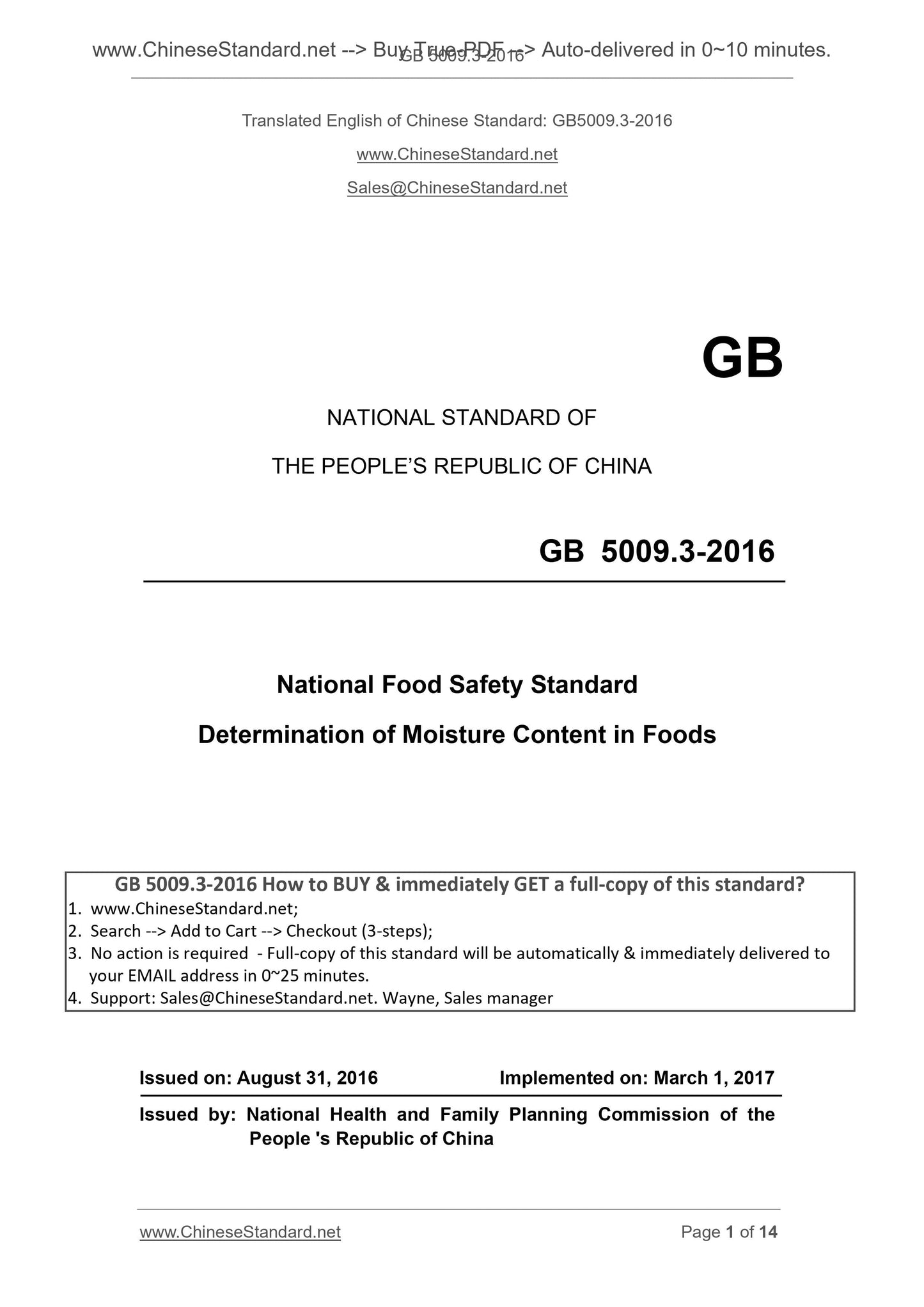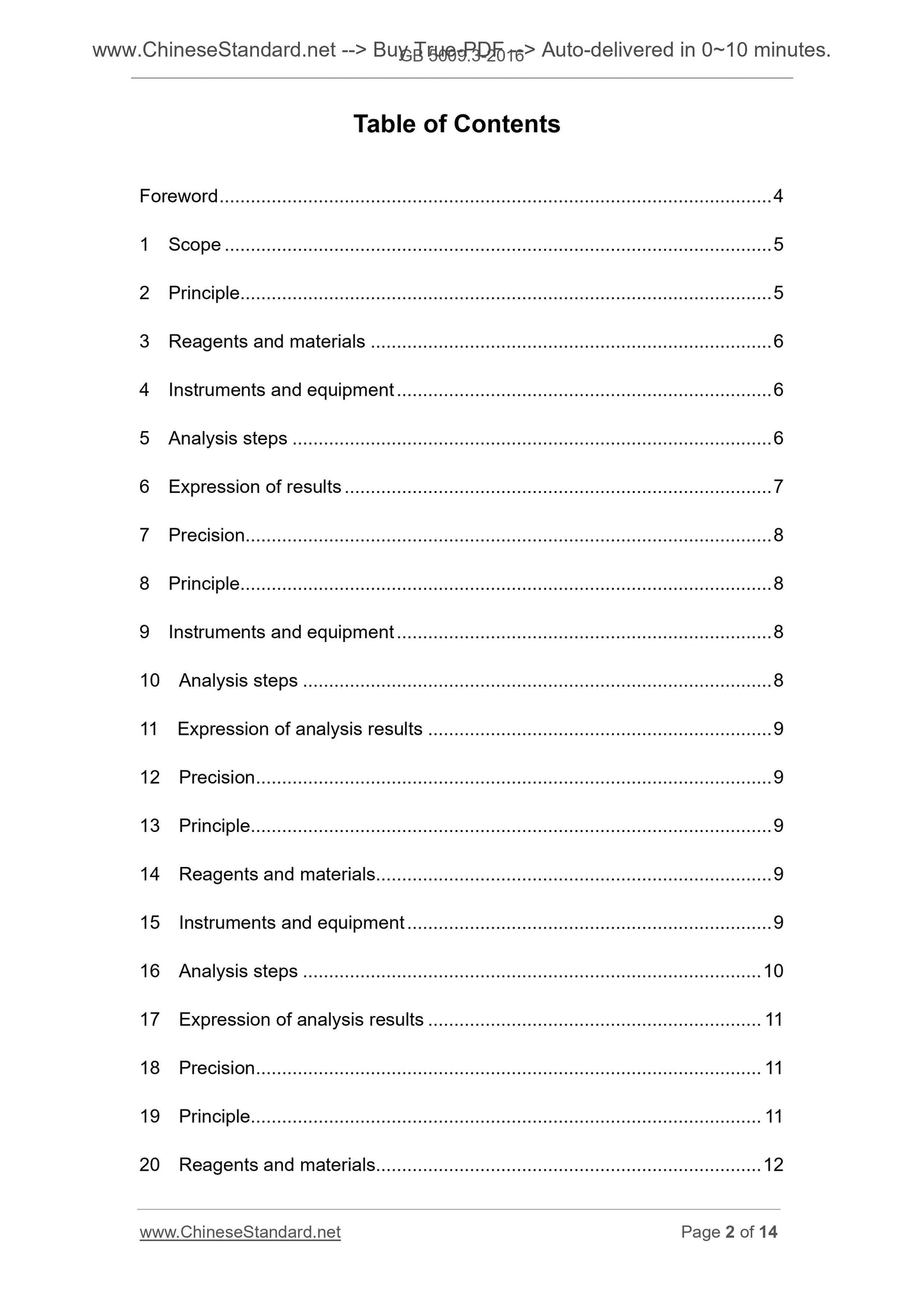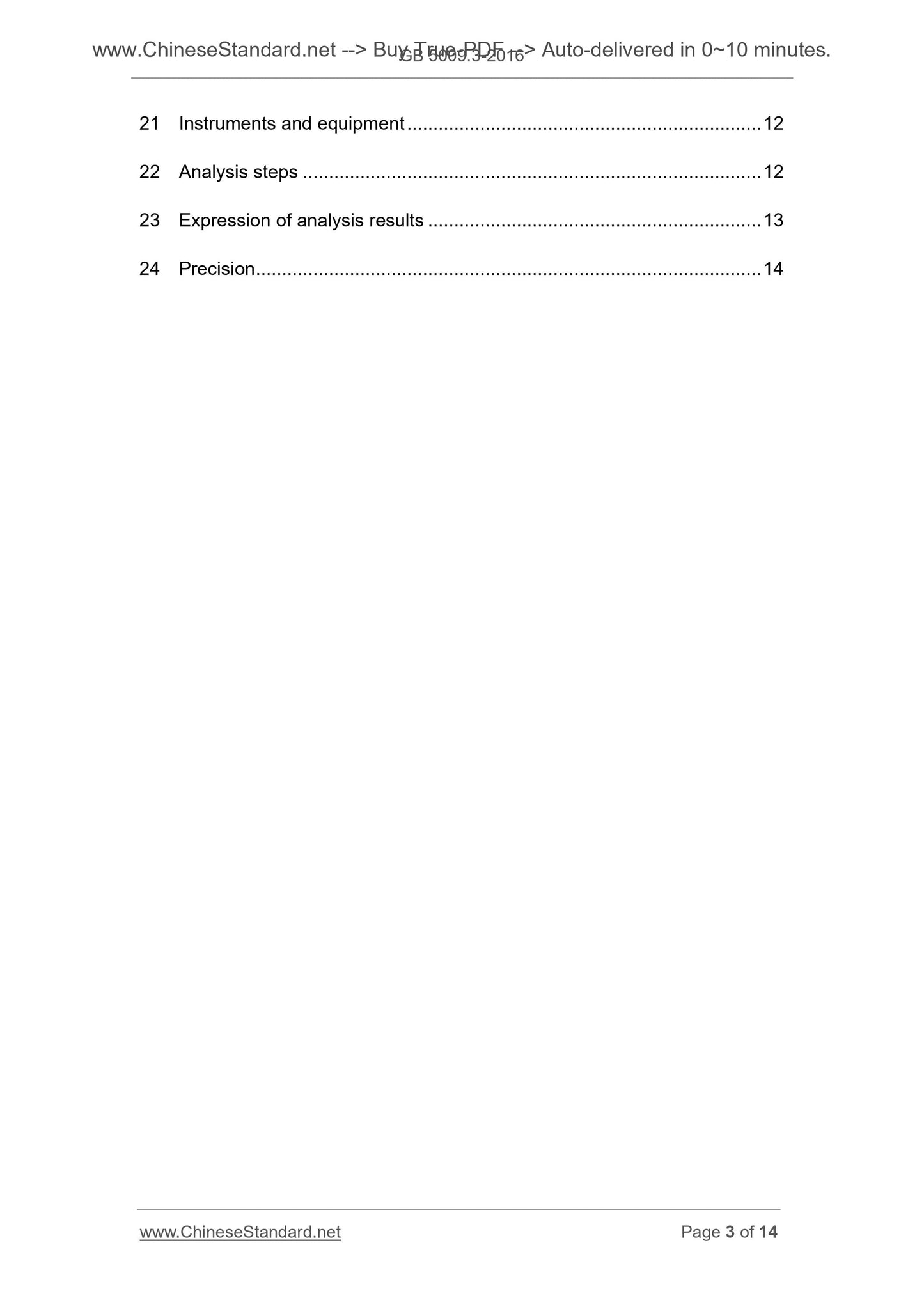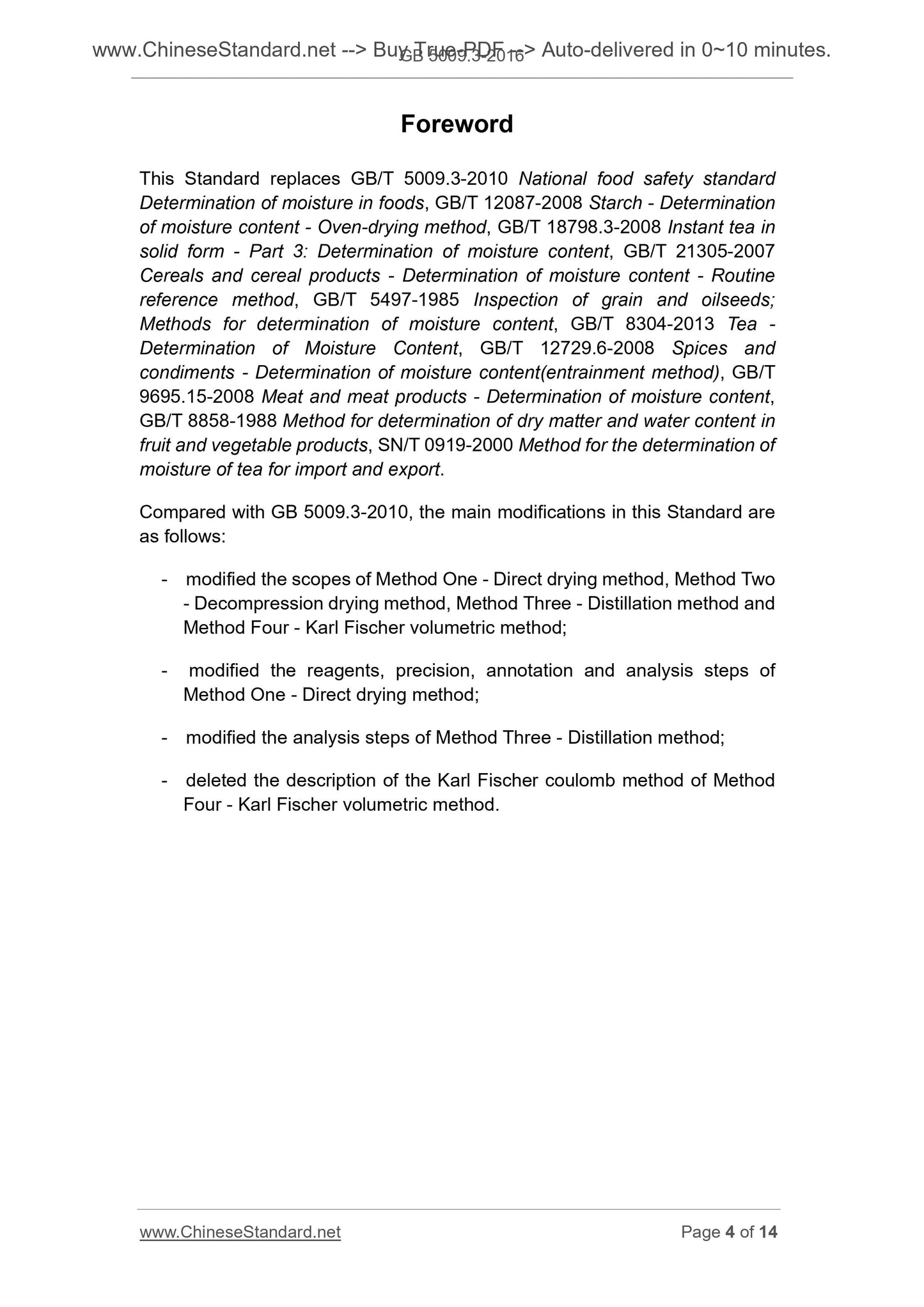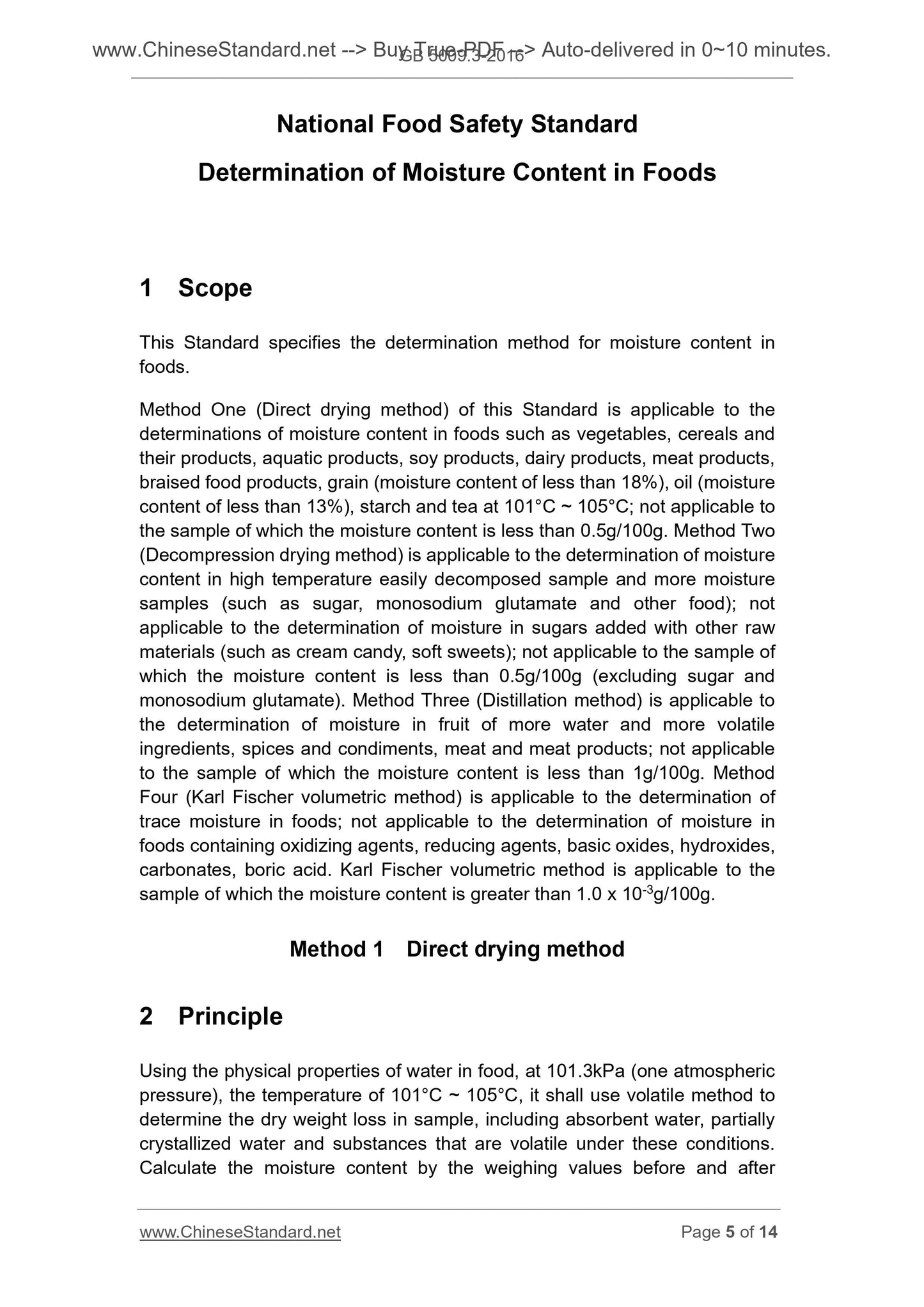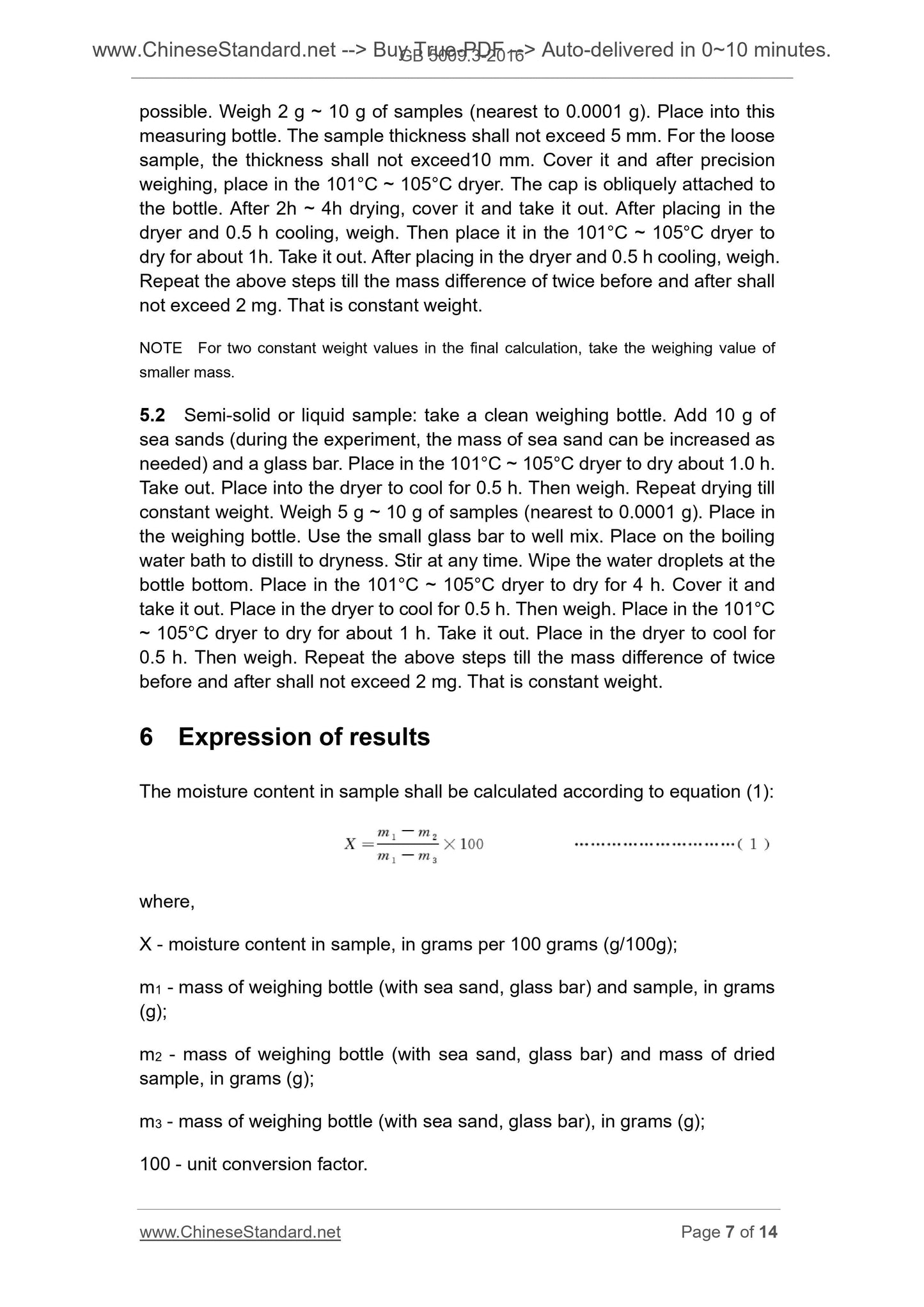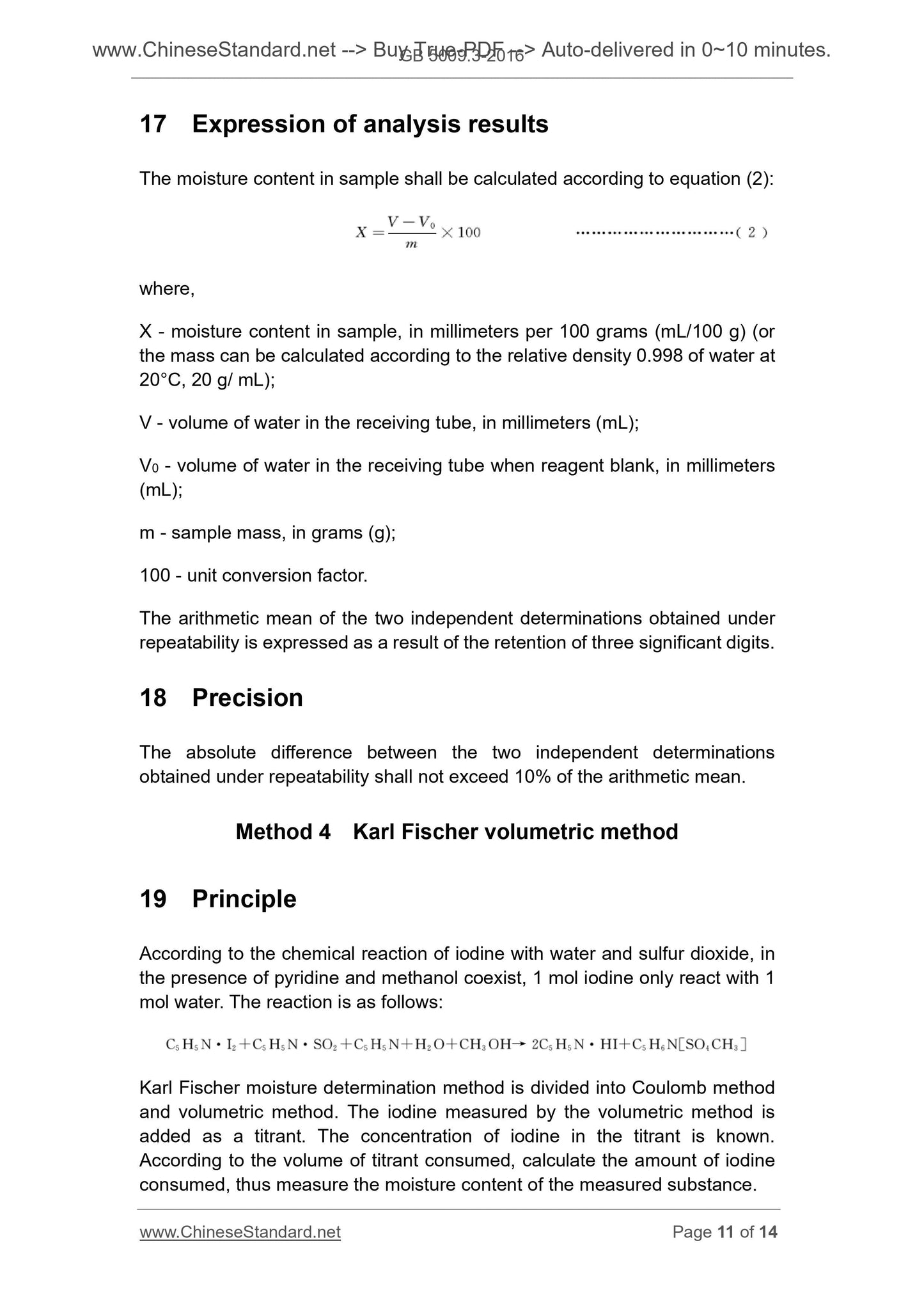1
/
of
7
www.ChineseStandard.us -- Field Test Asia Pte. Ltd.
GB 5009.3-2016 English PDF
GB 5009.3-2016 English PDF
Regular price
$75.00
Regular price
Sale price
$75.00
Unit price
/
per
Shipping calculated at checkout.
Couldn't load pickup availability
GB 5009.3-2016: National food safety standard - Determination of Moisture Content in Foods
Delivery: 9 seconds. Download (and Email) true-PDF + Invoice.Get Quotation: Click GB 5009.3-2016 (Self-service in 1-minute)
Newer / historical versions: GB 5009.3-2016
Preview True-PDF
Scope
This Standard specifies the determination method for moisture content infoods.
Method 1 (Direct drying method) of this Standard is applicable to the
determinations of moisture content in foods such as vegetables, cereals and
their products, aquatic products, soy products, dairy products, meat products,
braised food products, grain (moisture content of less than 18%), oil (moisture
content of less than 13%), starch and tea at 101°C ~ 105°C; not applicable to
the sample of which the moisture content is less than 0.5g/100g. Method 2
(Decompression drying method) is applicable to the determination of moisture
content in high temperature easily decomposed sample and more moisture
samples (such as sugar, monosodium glutamate and other food); not
applicable to the determination of moisture in sugars added with other raw
materials (such as cream candy, soft sweets); not applicable to the sample of
which the moisture content is less than 0.5g/100g (excluding sugar and
monosodium glutamate). Method 3 (Distillation method) is applicable to the
determination of moisture in fruit of more water and more volatile ingredients,
spices and condiments, meat and meat products; not applicable to the
sample of which the moisture content is less than 1g/100g. Method 4 (Karl
Fischer volumetric method) is applicable to the determination of trace
moisture in foods; not applicable to the determination of moisture in foods
containing oxidizing agents, reducing agents, basic oxides, hydroxides,
carbonates, boric acid. Karl Fischer volumetric method is applicable to the
sample of which the moisture content is greater than 1.0 x 10-3g/100g.
Method 1 -- Direct drying method
Basic Data
| Standard ID | GB 5009.3-2016 (GB5009.3-2016) |
| Description (Translated English) | National food safety standard - Determination of Moisture Content in Foods |
| Sector / Industry | National Standard |
| Classification of Chinese Standard | C53 |
| Classification of International Standard | 67.040 |
| Word Count Estimation | 8,895 |
| Date of Issue | 2016-08-31 |
| Date of Implementation | 2017-03-01 |
| Older Standard (superseded by this standard) | SN/T 0919-2000; GB/T 9695.15-2008; GB/T 8858-1988; GB/T 8304-2013; GB/T 5497-1985; GB/T 21305-2007; GB/T 18798.3-2008; GB/T 12729.6-2008; GB/T 12087-2008; GB 5009.3-2010 |
| Regulation (derived from) | Announcement of the State Administration of Public Health and Family Planning 2016 No.11 |
| Issuing agency(ies) | National Health and Family Planning Commission of the People's Republic of China, State Food and Drug Administration |
Share
